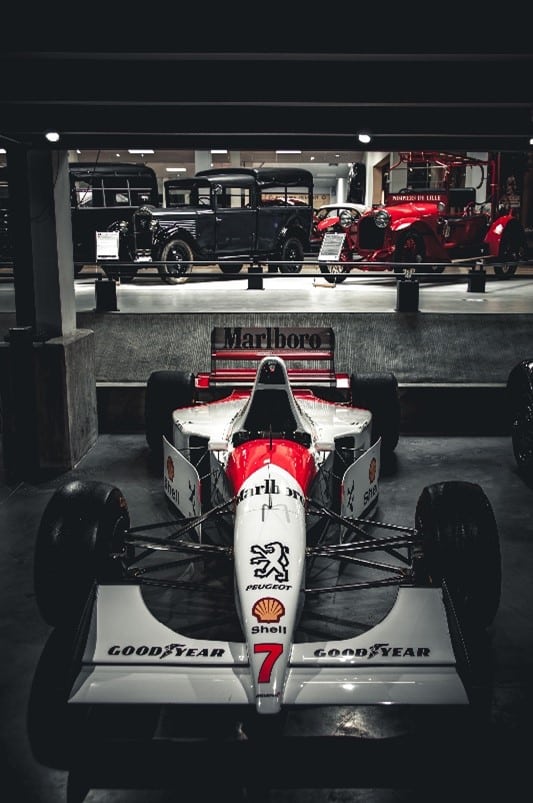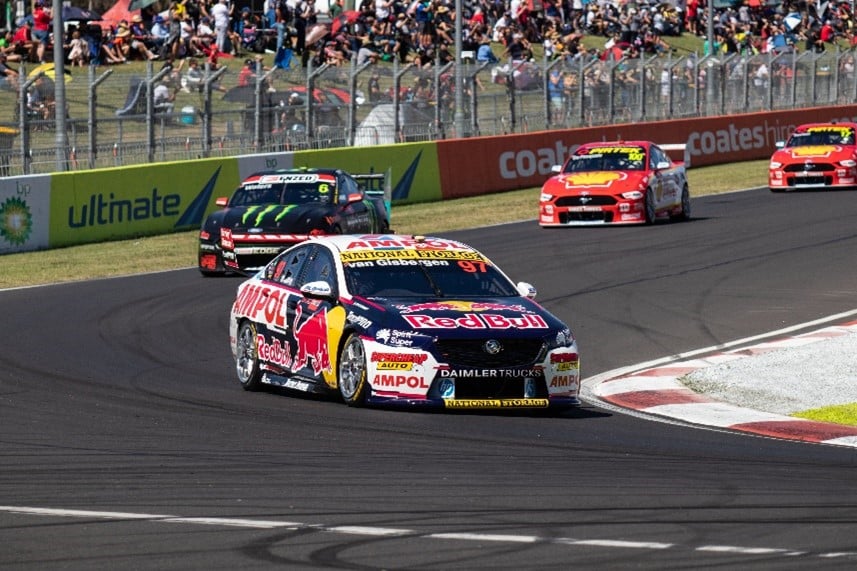Springs in Racing Cars
The pinnacle of motorsport, Formula 1, is globally recognised for its constant technological advancements. For drivers, securing top speed is paramount, with cutting-edge technology delivering optimal results under extreme conditions. As dedicated fans watch these talented drivers take to the track, the team at European Springs are fascinated by the intricate components of the cars, such as springs and wire forms.

As industry experts and leading innovators in spring manufacturing and high-speed press technology, we understand the importance of precision and reliability in such demanding applications.
We’re proud to work closely with the automotive industry in supplying many components that help drivers over the finishing line in record time. Today, we’re exploring our involvement in this sector and how our springs are a vital puzzle piece for the Drivers’ Champion.
Disc Brakes
In the early days of Formula 1, the sport implemented disc brakes as a consistent means of safely stopping high-speed cars. Today, practically every car in production, including commercial automobiles, relies on disc brakes. These modern brakes are significantly more durable and efficient than the once commonplace ‘drum’ style brakes. Featuring rotating discs attached to the wheels, the brake pads apply pressure onto the discs to slow the car down or bring it to a full stop.
In Formula 1, springs are vital in the car’s suspension system, which includes components like dampers, anti-sway bars, and arms. Together, these elements ensure stability, control, and handling during high-speed manoeuvres and braking. Specifically, the springs in the disc brakes play a crucial role in absorbing and distributing the forces generated when brakes are applied, which helps maintain proper brake pad positioning and absorbs vibrations and shocks caused by intense braking forces.
Pull-Rod Front Suspension
The pull-rod front suspension is an integral component in the design of modern Formula 1 racing cars, providing advanced handling capabilities through its incorporation of high-performance springs. The suspension system’s primary function is to absorb bumps and handle uneven terrain, and suspension springs play a critical role in achieving this objective. The stiffness of the springs significantly affects the car’s performance, as they control the extent of the suspension’s movement in response to road conditions. At European Springs and Pressings Ltd, our extensive experience in suspension spring manufacturing ensures the provision of top-quality components, catering to the needs of drivers worldwide.
Push-Rod Front Suspension
In racing cars, the push-rod front suspension system is crucial in ensuring optimal handling and performance. Although pull-rods were the earlier suspension system used in racing cars, push-rods have since become more popular due to their ease of implementation in high-nosed racing vehicles. In simpler terms, push-rods work by flexing with the wheel as it encounters bumps on the track, resulting in better aerodynamics for a streamlined race. Most Formula 1 teams today use push-rods because they are easier to install than pull-rods, and critical geometry in spring damper layouts tends to pose fewer difficulties.
For any suspension system, be it pull-rods or push-rods, the spring is crucial for absorbing shock and transferring energy throughout the vehicle. A reliable suspension system is a game-changer for race teams, as it can make or break their efforts, regardless of how skilled their drivers are.
It’s worth noting that any component of the car above the level of the suspension is considered a sprung mass due to the springs’ existence within a suspension device. The rule of thumb is that the smaller the ratio of unsprung mass to sprung mass, the more comfortable and easier the ride for the driver, which ultimately contributes to the overall success of the vehicle.
Performance Benefits of Customised Racing Springs

Here are some key performance benefits of customised racing springs:
- Improved Stability: Customised springs can enhance stability by optimising the suspension setup, allowing for better control and handling during high-speed manoeuvres and cornering.
- Precise Handling: Racing springs can be tailored to fine-tune the vehicle’s response, ensuring precise handling characteristics and improved driver feedback, leading to more confident and consistent performance.
- Better Traction: Customised springs can optimise weight transfer and ensure maximum contact between the tires and the road, improving traction, acceleration, and braking performance.
- Reduced Body Roll: Custom racing springs can help minimise body roll, keeping the vehicle more level during cornering, which increases stability, reduces tire wear, and improves overall lap times.
- Enhanced Comfort: Despite the high-performance nature of racing, custom springs can be designed to provide a balance of comfort and performance, ensuring a smoother ride for the driver and reducing fatigue during long races.
The team at European Springs have had extensive experience manufacturing premium custom springs for racing applications, including those used in push-rod front suspensions.
Our springs are specifically engineered to withstand the demanding conditions of high-speed racing, providing athletes with superior control and stability. With our extensive experience in spring manufacturing and our commitment to excellence, we offer limitless precision-made bespoke springs to meet the exact specifications of racing car suspensions.
To enquire about our custom racing car springs, please don’t hesitate to contact us and start your journey with our design team.
